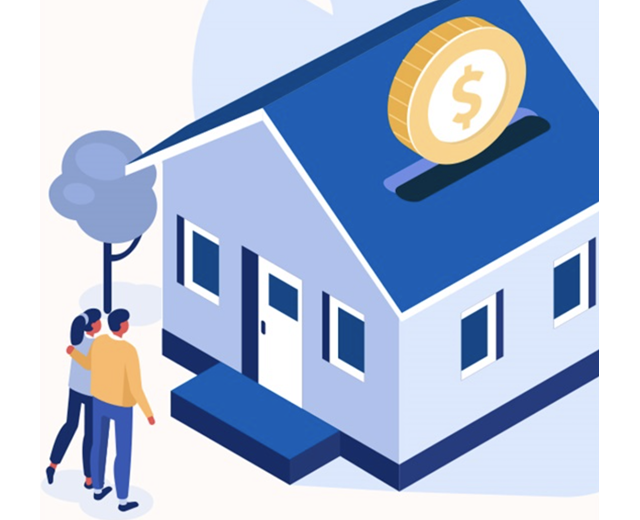Step-by-Step Process to Make An Application For Conventional Mortgage Loans
Step-by-Step Process to Make An Application For Conventional Mortgage Loans
Blog Article
The Vital Variables to Take Into Consideration When Finding Between Fixed-Rate and Adjustable-Rate Home Mortgage Finances
When reviewing home mortgage alternatives, debtors face an essential decision between fixed-rate and adjustable-rate financings, each providing possible mistakes and distinct benefits. Trick considerations such as rate of interest security, predictability in monthly payments, and the ramifications of prospective rate adjustments can substantially affect lasting monetary health. Recognizing the anticipated duration of homeownership and the overall price of borrowing can form one's strategy. As these factors intertwine with private monetary scenarios and take the chance of tolerance, the effects of this choice may not be as uncomplicated as they seem. What subtleties should be prioritized in this essential decision-making procedure?
Rates Of Interest Stability
When selecting a home mortgage, recognizing interest price stability is vital for informed decision-making. Rate of interest prices can considerably influence the overall expense of a home loan, and identifying the nature of these prices is important for debtors.
On the various other hand, adjustable-rate home mortgages (ARMs) start with reduced initial rates that may change regularly based on market problems. While this can lead to lower settlements initially, it also presents uncertainty, as debtors might face increased repayments if rates of interest increase. For those considering an ARM, it is vital to evaluate the possibility of rate modifications, the capacity for repayment rises, and the size of the initial fixed-rate period.
Eventually, the option between adjustable-rate and fixed-rate home mortgages pivots on private danger tolerance and financial scenarios. Comprehending rate of interest stability helps borrowers make educated choices that straighten with their lasting economic objectives.
Month-to-month Settlement Predictability
While borrowers frequently prioritize rate of interest rate security, the predictability of month-to-month payments is just as vital in the home mortgage choice process (Conventional mortgage loans). Monthly repayment predictability plays an essential duty in budgeting and economic preparation, as it straight affects a house owner's money circulation and general financial wellness
Fixed-rate mortgages supply a constant month-to-month repayment throughout the life of the funding, enabling debtors to expect and intend their costs effectively. This security can be particularly helpful for first-time property buyers or those on a fixed earnings, as it gets rid of the unpredictability related to fluctuating repayments.
Alternatively, adjustable-rate home loans (ARMs) generally include lower preliminary payments that can alter over time, causing potential irregularity in regular monthly obligations. While originally attractive, this changability can complicate financial preparation, particularly if debtors do not make up future rate adjustments.
Prospective Price Adjustments
In the world of variable-rate mortgages (ARMs), prospective price modifications represent a considerable factor that borrowers have to meticulously consider. Unlike fixed-rate home mortgages, where the rates of interest remains unchanged for the life of the finance, ARMs are characterized by varying passion prices that are tied to market indices. This variability can result in considerable modifications in monthly repayments, influencing the customer's financial preparation and budgeting.
Debtors should be aware of the margin and index made use of to compute these changes, as they directly influence future passion prices. In addition, ARMs usually consist of caps that limit how much the interest rate can increase at each adjustment and over the life of the funding, which can supply some degree of defense versus drastic rate hikes.
Comprehending these prospective adjustments is essential for debtors, discover this as they straight influence long-term settlement responsibilities. Assessing personal economic situations and take the chance of tolerance is crucial when choosing whether an ARM straightens with one's economic goals.
Funding Term Considerations
Lending term factors to consider play a pivotal duty in the decision-making procedure for customers selecting in between fixed-rate and adjustable-rate click site home loans. The size of the loan term substantially influences monthly repayments, rate of interest, and general economic planning. Fixed-rate mortgages normally offer regards to 15 to 30 years, giving security in monthly settlements and predictability in budgeting. This can be especially appealing for debtors who plan to remain in the same home long-lasting and favor the certainty of fixed repayments throughout the life of the loan.

Ultimately, debtors have to evaluate their personal situations, monetary objectives, and market problems when considering the effects of car loan term selections within each mortgage kind.

Overall Cost of Loaning
Fixed-rate mortgages offer foreseeable monthly payments, as the rate of interest price remains constant throughout the loan term. This predictability can lead to lower general prices, specifically in a stable or declining rate of interest price setting.
Conversely, variable-rate mortgages (ARMs) normally begin with reduced initial rates, leading to minimized ahead of time prices. However, these rates can boost after a first duration, leading to potentially greater long-lasting expenses. Borrowers need to take into consideration the blog frequency and degree of price modifications, in addition to the overall funding duration, to precisely examine the monetary effects.
Moreover, the total price of borrowing includes not only passion rates but likewise costs and various other connected costs, such as shutting prices and insurance policy (Conventional mortgage loans). When examining home loan options, consumers need to carry out an extensive cost analysis over the life of the financing. By doing so, they can make an enlightened choice that lines up with their financial goals and run the risk of resistance
Verdict
In conclusion, selecting in between fixed-rate and adjustable-rate mortgage necessitates careful consideration of a number of essential elements. Rate of interest security and monthly settlement predictability are extremely important for reliable budgeting, while the possibility for price adjustments in ARMs presents financial uncertainty. Furthermore, the expected duration of homeownership and the total price of loaning, consisting of rates of interest and linked fees, have to line up with specific economic circumstances and take the chance of resistance. Such an extensive analysis will certainly assist in enlightened decision-making in home mortgage option.
Trick factors to consider such as passion price stability, predictability in regular monthly repayments, and the ramifications of possible price changes can significantly affect long-lasting monetary wellness. Passion prices can significantly impact the overall expense of a mortgage, and recognizing the nature of these prices is vital for consumers. Unlike fixed-rate mortgages, where the passion price remains unmodified for the life of the financing, ARMs are defined by fluctuating rate of interest rates that are connected to market indices. Furthermore, ARMs commonly consist of caps that limit how much the rate of interest price can increase at each modification and over the life of the financing, which can provide some level of security versus radical price hikes.
Interest rate stability and regular monthly payment predictability are vital for effective budgeting, while the capacity for rate modifications in ARMs presents financial uncertainty.
Report this page